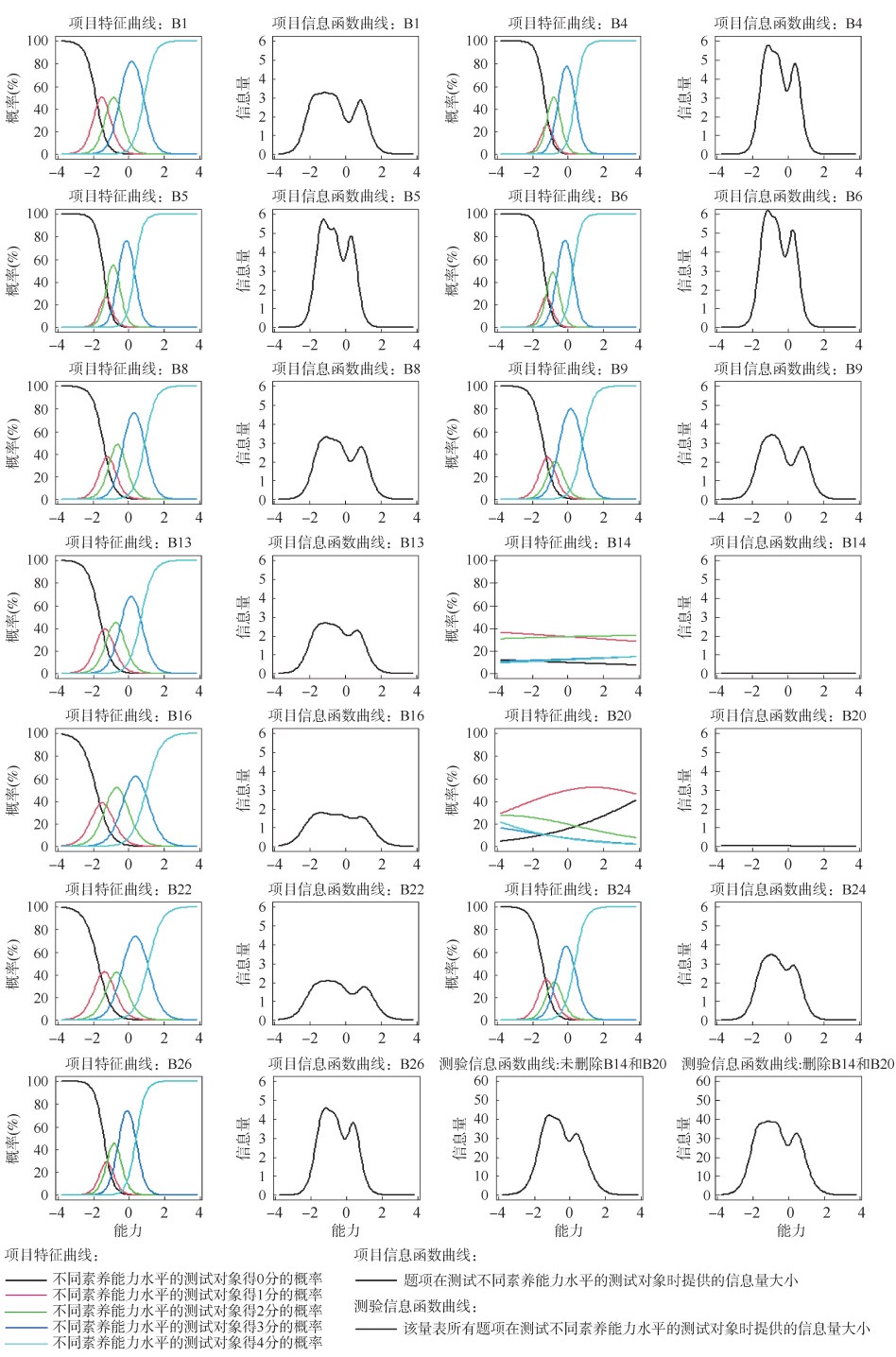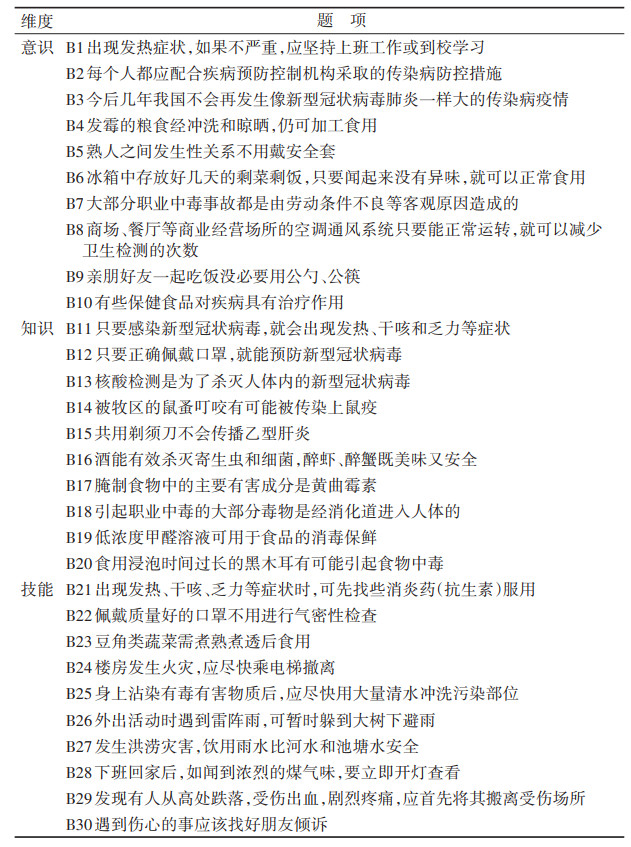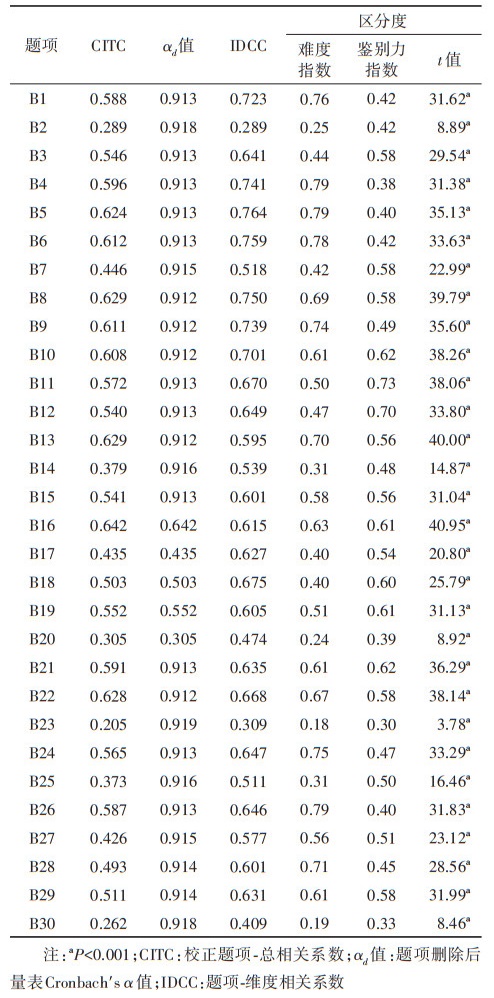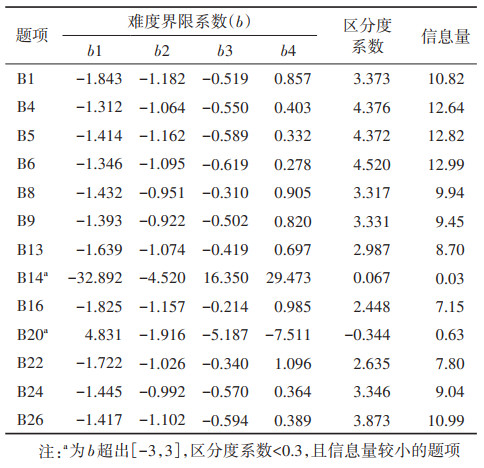| [1] |
郑榕, 张自力, 张璿璿. 高等教育、公共卫生意识和健康行为——兼论高校扩招对"新冠肺炎"疫情防控的影响[J]. 经济与管理评论, 2020, 36(6): 5-15. Zheng R, Zhang ZL, Zhang XX. Higher education, public health awareness and health behavior-a discussion of the impact of college enrollment expansion on COVID-19 epidemic prevention and control[J]. Rev Econ Manag, 2020, 36(6): 5-15. DOI:10.13962/j.cnki.37-1486/f.2020.06.001 |
|
| [2] |
逯田力, 鹿广利. 对于突发公共事件分类的认识和理解[J]. 中国公共安全: 学术版, 2010(4): 37-39. Lu TL, Lu GL. Classification and characteristics of events impacts on public safety[J]. China Public Secur: Acad Ed, 2010(4): 37-39. DOI:10.3969/j.issn.1672-2396.2010.04.008 |
|
| [3] | |
|
| [4] |
李祥, 许立红. 汶川地震人员伤亡宏观研究[C]//第二届浙江减灾之路学术研讨会论文集. 平湖: 浙江省科学技术协会, 2016: 247-253.
Li X, Xu LH. Macroscopic study on casualties of the Wenchuan earthquake[C]//Proceedings of the second Zhejiang disaster reduction road symposium. Pinghu: Zhejiang Science and Technology Association, 2016: 247-253.
|
|
| [5] |
World Health Organization. Coronavirus disease (COVID-19) situation dashboard[EB/OL]. (2022-03-08)[2022-03-08]. https://covid19.who.int/.
|
|
| [6] |
别如娥. 基于突发公共卫生事件的居民健康素养评价指标体系研究[D]. 南京: 南京中医药大学, 2012.
Bie RE. Study on the evaluation index system of residents' health literacy based on public health emergencies[D]. Nanjing: Nanjing University of Chinese Medicine, 2012.
|
|
| [7] |
杨宇, 王子龙. 社会公众应急能力建设途径研究[J]. 生产力研究, 2009(16): 95-97. Yang Y, Wang ZL. Study on the ways of public emergency response capacity building[J]. Prod Res, 2009(16): 95-97. DOI:10.19374/j.cnki.14-1145/f.2009.16.035 |
|
| [8] |
宁艳, 陶茂萱, 胡俊峰, 等. 陕西省公众应对突发公共卫生事件知识水平现况调查[J]. 中国健康教育, 2010, 26(5): 331-333, 337. Ning Y, Tao MX, Hu JF, et al. A cross-sectional study on knowledge of public health emergency response among the general public in Shaanxi Province[J]. Chin J Health Educ, 2010, 26(5): 331-333, 337. DOI:10.16168/j.cnki.issn.1002-9982.2010.05.015 |
|
| [9] |
戴冉, 张晋昕, 李伟栋, 等. 广东省城市居民应对突发公共卫生事件知晓现况及其影响因素[J]. 中国健康教育, 2011, 27(9): 651-654, 666. Dai R, Zhang JX, Li WD, et al. Study on knowledge of public health emergency and its influencing factors among urban Guangdong residents[J]. Chin J Health Educ, 2011, 27(9): 651-654, 666. DOI:10.16168/j.cnki.issn.1002-9982.2011.09.005 |
|
| [10] |
王兴平. 应急管理中社会公众的应急能力研究[J]. 商业时代, 2012(2): 118-119. Wang XP. Study on the public's emergency response ability in emergency management[J]. Commer Times, 2012(2): 118-119. DOI:10.3969/j.issn.1002-5863.2012.02.054 |
|
| [11] |
杨宏飞, 赵贞卿. 城乡居民突发事件应对能力研究—以浙江省为例[J]. 灾害学, 2012, 27(3): 126-131. Yang HF, Zhao ZQ. A study on emergency coping ability of residents in urban and rural areas[J]. J Catastrophol, 2012, 27(3): 126-131. DOI:10.3969/j.issn.1000-811X.2012.03.026 |
|
| [12] |
洪源浩, 管纪惠, 颜翠兰, 等. 福建省公众应对突发公共卫生事件知识与技能现状及影响因素[J]. 海峡预防医学杂志, 2012, 18(6): 1-3. DOI: CNKI:SUN:HXYF.0.2012-06-003. Hong YH, Guan JH, Yan CL, et al. Survey on the knowledge and skills of public health emergencies and its influencing factors of residents in Fujian, China[J]. Strait J Prev Med, 2012, 18(6): 1-3. DOI: CNKI:SUN:HXYF.0.2012-06-003.
|
|
| [13] |
薛澜, 周海雷, 陶鹏. 我国公众应急能力影响因素及培育路径研究[J]. 中国应急管理, 2014(5): 9-15. Xue L, Zhou HL, Tao P. Study on the influencing factors and cultivation paths of my country's public emergency response ability[J]. China Emerg Manag, 2014(5): 9-15. |
|
| [14] |
顾帮朝, 邱晓辉. 基层公众自救互救能力现状及对策建议——从江苏的探索实践出发[J]. 江苏卫生事业管理, 2017, 28(2): 1-5. Gu BC, Qiu XH. The status quo of basic level public's self-help and mutual rescue ability and countermeasures—starting from Jiangsu's exploration and practice[J]. Jiangsu Healthcare Admin, 2017, 28(2): 1-5. DOI:10.3969/j.issn.1005-7803.2017.02.001 |
|
| [15] |
Zhan SY, Yang YY, Fu CX. Public's early response to the novel coronavirus-infected pneumonia[J]. Emerg Microbes Infect, 2020, 9(1): 534. DOI:10.1080/22221751.2020.1732232 |
|
| [16] |
贾艳, 王超, 朱士俊, 等. 新冠肺炎疫情防控知识、技能和心理状况调查分析[J]. 中国社会医学杂志, 2021, 38(2): 172-175. Jia Y, Wang C, Zhu SJ, et al. A survey on Chinese public's COVID-19 prevention and control knowledge, skills and psychological and behavioral symptoms[J]. Chin J Soc Med, 2021, 38(2): 172-175. DOI:10.3969/j.issn.1673-5625.2021.02.014 |
|
| [17] |
Devellis RF. Classical test theory[M]. Netherlands: Springer, 2005.
|
|
| [18] |
Embretson SE, Reise SP. Item Response Theory for psychologists[M]. New York: Psychology Press, 2000.
|
|
| [19] | |
|
| [20] |
Smith BJ, Tang KC, Nutbeam D. WHO health promotion glossary: new terms[J]. Health Promot Int, 2006, 21(4): 340-345. DOI:10.1093/heapro/dal033 |
|
| [21] |
潘绥铭, 姚星亮, 黄盈盈. 论定性调查的人数问题: 是"代表性"还是"代表什么"的问题——"最大差异的信息饱和法"及其方法论意义[J]. 社会科学研究, 2010, 32(4): 108-115. Pan SM, Yao XL, Huang YY. The number of the interviewees in qualitative study: is it the issue of "Representing a Population" or "Representing What"—methodological meaning of the" Maximum Difference and Information Saturation Sampling Strategy"[J]. Soc Sci Res, 2010, 32(4): 108-115. DOI:10.3969/j.issn.1000-4769.2010.04.022 |
|
| [22] |
邵作运, 李秀霞. 引文分析法与内容分析法结合的文献知识发现方法综述[J]. 情报理论与实践, 2020, 43(3): 153-159. Shao ZY, Li XX. A survey of literature knowledge discovery methods based on the combination of citation analysis and content analysis[J]. Inf Stud Theory Appl, 2020, 43(3): 153-159. DOI:10.16353/j.cnki.1000-7490.2020.03.025 |
|
| [23] | |
|
| [24] | |
|
| [25] |
Evans N, Hannigan B, Pryjmachuk S, et al. Using the nominal group technique to involve young people in an evidence synthesis which explored 'risk' in inpatient mental healthcare[J]. Res Involv Engagem, 2017, 3(1): 16. DOI:10.1186/s40900-017-0069-8 |
|
| [26] |
Chang LC, Chen YC, Wu FL, et al. Exploring health literacy competencies towards patient education programme for Chinese-speaking healthcare professionals: a Delphi study[J]. BMJ Open, 2017, 7(1): e011772. DOI:10.1136/bmjopen-2016-011772 |
|
| [27] |
王高玲, 蒋欣静, 张怡青. 慢性病患者健康素养评价指标体系Delphi法构建[J]. 中国公共卫生, 2018, 34(1): 71-74. Wang GL, Jiang XJ, Zhang YQ. Establishment of an evaluation index system for health literacy among chronic disease patients with Delphi method[J]. Chin J Public Health, 2018, 34(1): 71-74. DOI:10.11847/zgggws1113588 |
|
| [28] | |
|
| [29] |
Tian XY, Di ZQ, Cheng YL, et al. Study on the development of an infectious disease-specific health literacy scale in the Chinese population[J]. BMJ Open, 2016, 6(8): e012039. DOI:10.1136/bmjopen-2016-012039 |
|
| [30] |
郝元涛, 孙希凤, 方积乾, 等. 量表条目筛选的统计学方法研究[J]. 中国卫生统计, 2004, 21(4): 209-211. Hao YT, Sun XF, Fang JQ, et al. The study of statistical methods used for item selection[J]. Chin J Health Stat, 2004, 21(4): 209-211. DOI:10.3969/j.issn.1002-3674.2004.04.006 |
|
| [31] |
杜文久. 高等项目反应理论[M]. 北京: 科学出版社, 2014.
Du WJ. Higher item response theory[M]. Beijing: Science Press, 2014.
|
|
| [32] | |
|
| [33] |
庞海玉, 康琳, 刘雅茹. 基于项目反应理论的老年医学知信行量表条目分析与评价[J]. 基础医学与临床, 2019, 39(8): 1108-1113. Pang HY, Kang L, Liu YR. Item analysis and evaluation of geriatric knowledge, attitude and practice scale based on item response theory[J]. Bas Clin Med, 2019, 39(8): 1108-1113. DOI:10.16352/j.issn.1001-6325.2019.08.009 |
|
| [34] |
Al-Bsheish M, Bin Mustafa M, Ismail M, et al. Perceived management commitment and psychological empowerment: a study of intensive care unit nurses' safety[J]. Saf Sci, 2019, 118: 632-640. DOI:10.1016/j.ssci.2019.05.055 |
|
| [35] |
Christian MS, Bradley JC, Wallace JC, et al. Workplace safety: a meta-analysis of the roles of person and situation factors[J]. J Appl Psychol, 2009, 94(5): 1103-1127. DOI:10.1037/a0016172 |
|
| [36] |
Zin SM, Ismail F. Employers' behavioural safety compliance factors toward occupational, safety and health improvement in the construction industry[J]. Proced Soc Behav Sci, 2012, 36(1): 742-751. DOI:10.1016/j.sbspro.2012.03.081 |
|
| [37] |
Al-Bsheish M, Jarrar M, Scarbrough A. A public safety compliance model of safety behaviors in the age of the COVID-19 pandemic[J]. Inquiry, 2021, 58: 1-6. DOI:10.1177/00469580211031382 |
|
| [38] |
Liu XX, Huang GX, Huang HQ, et al. Safety climate, safety behavior, and worker injuries in the Chinese manufacturing industry[J]. Saf Sci, 2015, 78: 173-178. DOI:10.1016/j.ssci.2015.04.023 |
|
| [39] | |
|
| [40] |
丁树良, 漆书青, 戴海崎. 现代教育与心理测量学原理[M]. 北京: 高等教育出版社, 2002.
Ding SL, Qi SQ, Dai HQ. Principles of modern educational and psychological measurement[M]. Beijing: Higher Education Press, 2002.
|
|
| [41] |
Sekely A, Taylor GJ, Bagby RM. Developing a short version of the Toronto Structured Interview for Alexithymia using item response theory[J]. Psychiatry Res, 2018, 266: 218-227. DOI:10.1016/j.psychres.2018.03.002 |
|
| [42] |
Costa DSJ, Asghari A, Nicholas MK. Item response theory analysis of the pain self-efficacy questionnaire[J]. Scand J Pain, 2017, 14(1): 113-117. DOI:10.1016/j.sjpain.2016.08.001 |
|
| [43] |
王伟梁, 周郁秋. 项目反应理论在健康相关量表中的应用现状及展望[J]. 中国卫生统计, 2018, 35(4): 633-636. DOI: CNKI:SUN:ZGWT.0.2018-04-044. Wang WL, Zhou YQ. Current status and prospects of the application of item response theory in health-related scales[J]. Chin J Health Stat, 2018, 35(4): 633-636. DOI: CNKI:SUN:ZGWT.0.2018-04-044.
|
|
| [44] |
邰隽, 许志飞, 李晓丹, 等. 基于项目反应理论的儿童睡眠问卷项目分析[J]. 中国全科医学, 2018, 21(23): 2844-2848. Tai J, Xu ZF, Li XD, et al. The item analysis of Pediatric Sleep Questionnaire based on the item response theory[J]. Chin Gen Pract, 2018, 21(23): 2844-2848. DOI:10.12114/j.issn.1007-9572.2018.00.129 |
|
| [45] |
吴明隆. 问卷统计分析实务-SPSS操作与应用[M]. 重庆: 重庆大学出版社, 2010.
Wu ML. Practice of questionnaire statistical analysis: operation and application of SPSS[M]. Chongqing: Chongqing University Press, 2010.
|
|
| [46] | |
|
| [47] |
Cook KF, Kallen MA, Amtmann D. Having a fit: impact of number of items and distribution of data on traditional criteria for assessing IRT's unidimensionality assumption[J]. Qual Life Res, 2009, 18(4): 447-460. DOI:10.1007/s11136-009-9464-4 |
|
| [48] | |
|
 2022, Vol. 43
2022, Vol. 43











